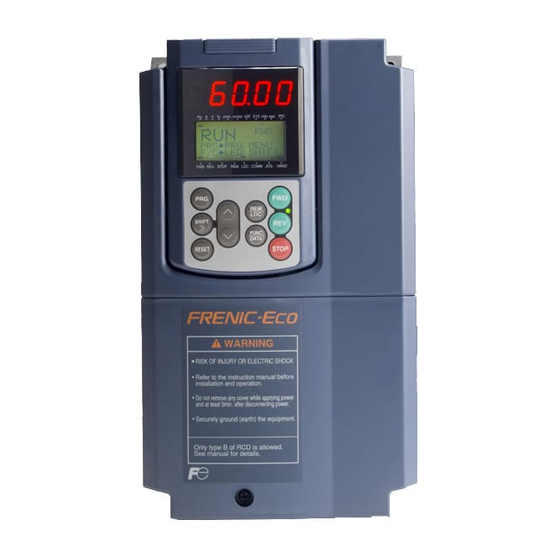
User Manuals: Fuji Electric FRENIC-ECO Frequency Drive
Manuals and User Guides for Fuji Electric FRENIC-ECO Frequency Drive. We have 1 Fuji Electric FRENIC-ECO Frequency Drive manual available for free PDF download: Instruction Manual
Fuji Electric FRENIC-ECO Instruction Manual (247 pages)
Designed for Fan and Pump Applications
Brand: Fuji Electric
|
Category: Servo Drives
|
Size: 5 MB
Table of Contents
-
Preface3
-
-
Icons15
-
Nameplates17
-
-
-
-
Wiring26
-
-
Running Mode63
-
-
Alarm Mode101
-
-
Perform Tuning107
-
Operation108
-
Test Run108
-
-
Data Protection131
-
-
Run Command132
-
Base Frequency134
-
Torque Boost136
-
Factory Default146
-
Stop Frequency150
-
Function (F31)152
-
Terminal [FMI]153
-
Motor (%R1)170
-
Motor Selection171
-
Clear Alarm Data180
-
-
-
-
-
-
Oun Overvoltage193
-
LU Undervoltage194
-
OLU Overload198
-
Er1 Memory Error199
-
Er3 CPU Error199
-
Er7 Tuning Error201
-
Daily Inspection205
-
-
-
Insulation Test210
-
Standard Models212
-
Three-Phase 208V212
-
-
-
-
1 To 75HP213
-
100 To 900HP214
-
-
-
Standard Models223
-
DC Reactor226
-
-
-
Options229
-
-
-
Advertisement
